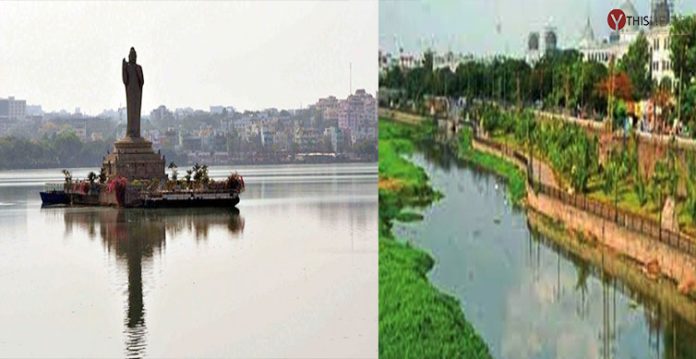At a time when cities around the world are dealing with rising levels of contamination in their rivers, two major water bodies in Hyderabad, the Musi River, and Hussain Sagar, are reporting the exact opposite trend.
The water quality of the Musi River and Hussain Sagar has greatly improved in recent years. Several authorities, including the Greater Hyderabad Municipal Corporation (GHMC), the Telangana State Pollution Control Board (TSPCB), and the Hyderabad Metropolitan Water Supply and Sewerage Board (HMWSSB), are collaborating to reduce pollution levels in these water bodies according to officials
The level of Biochemical Oxygen Demand (BOD), which represents the amount of oxygen consumed by bacteria and other microorganisms while decomposing organic matter, has decreased in the Musi, according to officials. While the BOD level was 58 mg/L in 2014, it was 22 mg/L in 2020.
ALSO READ: Govt to Construct 15 Bridges on Musi Rivers HMDA,GHMC to Spend Rs 545
Rainfall, according to WG Prasanna Kumar, director of National Green Corps, is one of the most important factors influencing the quality of any water body.
Hyderabad has had a few good monsoon seasons, which has resulted in improved water levels in Musi and Hussain Sagar. Another factor has been the GHMC’s, TSPCB’s, and HMWSSB’s ongoing efforts to ensure that sewage entering their water bodies is first treated. To ensure that the water that flows in is cleaner, the authorities have dredged the lake and relocated the solid waste. Previously, only about 10% to 20% of sewerage was treated. It’s about 70 to 80 percent right now, he said.
Another significant improvement has been observed in coliform levels, which provide a general indication of a water body’s sanitary condition. In 2014, the total coliform count in Musi was 6,220, while it was 1,200 in Hussain Sagar. The continuous cleaning and treatment of sewage have now reduced coliform to 1,229 and 985 in 2020, respectively, at Musi and Hussain Sagar. While these are some of the most significant steps taken by the authorities, they have done far more than simply treat sewage.
Ozonation and aeration
Aeration and ozonation, particularly in Hussain Sagar, are assisting the lake’s ecosystem in reviving. Biological contamination is also decreasing dramatically, according to experts.
Authorities also remove debris, other waste, and water hyacinth from these bodies of water on a regular basis. I believe the water will be clearer in a few years, Prasanna Kumar predicted.
(This story has been sourced from a third-party syndicated feed, agencies. Raavi Media accepts no responsibility or liability for the dependability, trustworthiness, reliability, and data of the text. Raavi Media management/ythisnews.com reserves the sole right to alter, delete or remove (without notice) the content at its absolute discretion for any reason whatsoever.)


